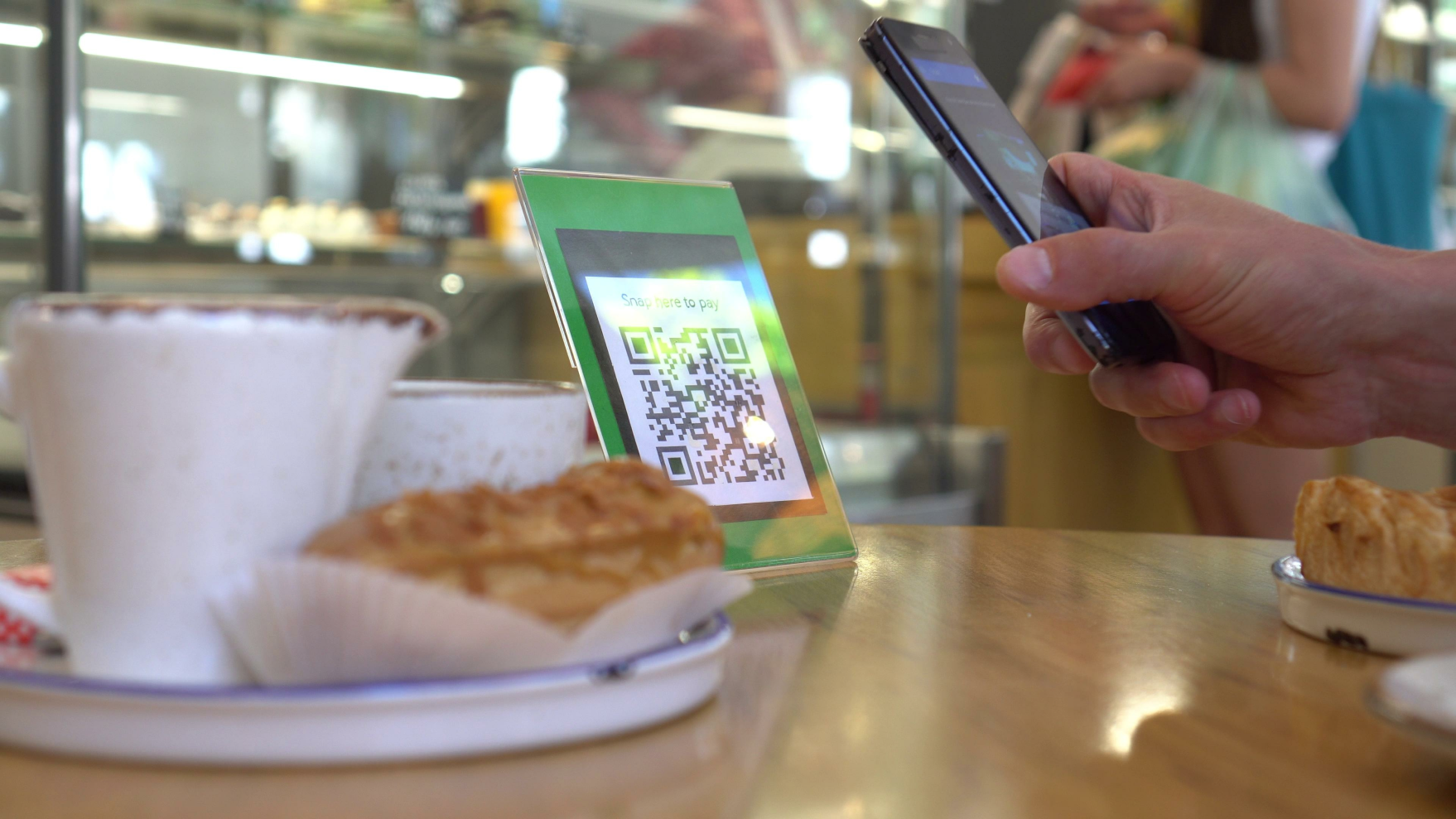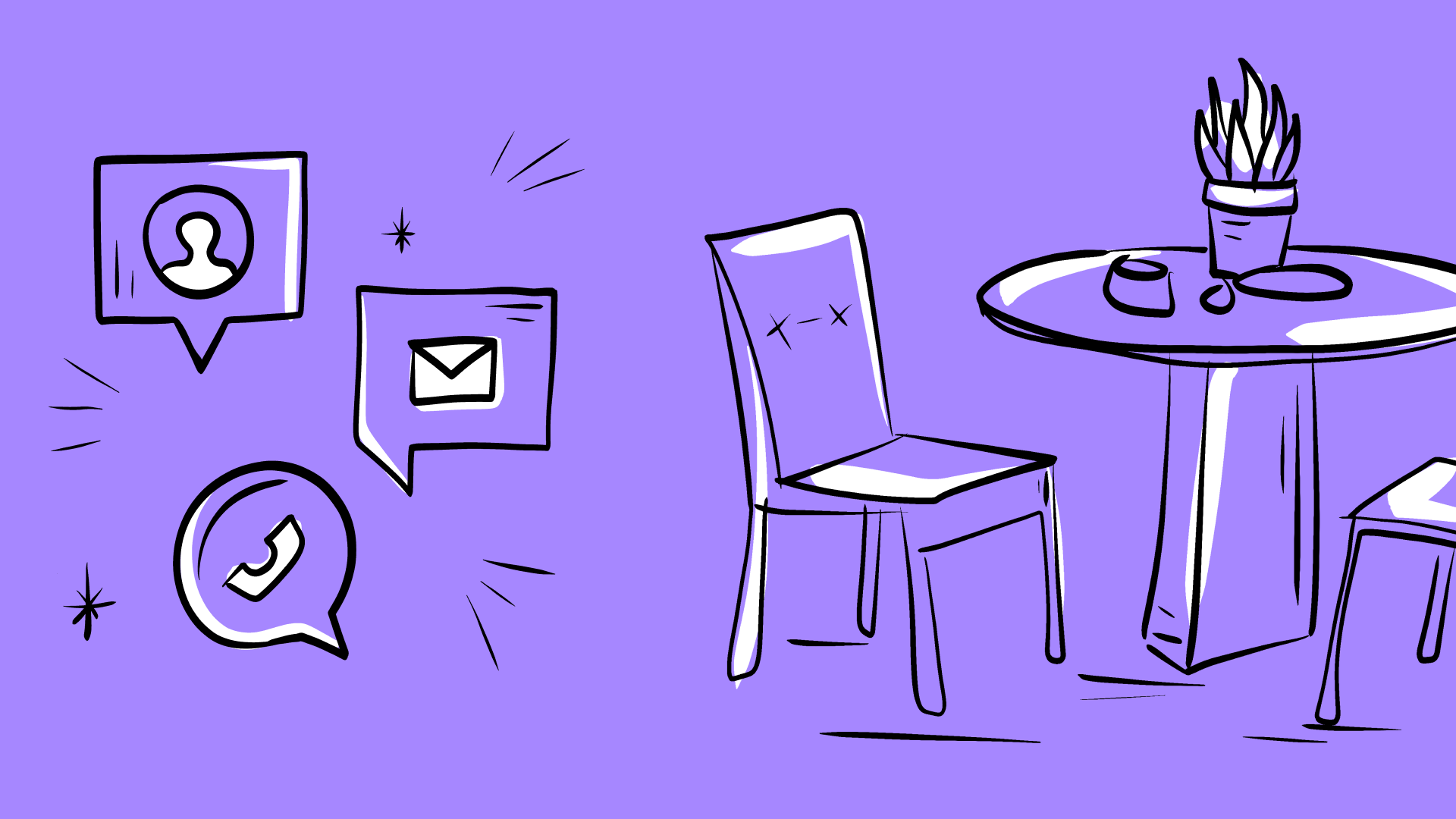Digital ordering has rapidly gained popularity in the past few years. Not only does this tech simplify operations for servers, but over 80% of restaurant patrons feel safer when contactless ordering and payment options are available.
There’s a good reason why it’s been such a topic of conversation in the hospitality industry. It boosts sales, increases tips, and improves the customer experience overall. So what is contactless ordering, how can you use it in hospitality, and could it have staying power in the industry as more than just a pandemic-era fad?
Download now: Your essential guide to contactless ordering
What is digital ordering in hospitality?
Digital ordering is any ordering method that reduces contact between restaurant serving staff and patrons. Most of the time, it looks like digital menus that guests can access through QR codes and customized URLs.
Contactless ordering and payment tech became standard practice for many venues during 2020 and has continued to prove itself an invaluable tech for the post-pandemic hospitality industry. Digital ordering is the most popular contactless service, and venues of all shapes and sizes benefit from the high flexibility it brings to isolated areas of a business, including:
- Table service
- Delivery
- Customer pickup
- Virtual brands
Let’s go over what implementing a restaurant digital ordering system can look like in practice.
How to use contactless menu ordering with digital menus and table service
Digital table service is the most common contactless option — it combines tech with tradition to offer a quicker and more seamless dining experience. It preserves the traditional dining experience where patrons are greeted and seated by front-of-house staff and eat their meals in the venue.
However, digital menus accessed via at-table QR codes take the place of paper menus. Diners use it to place their orders digitally whenever they’re ready without flagging down staff or collaborate with their server, who can answer questions, offer suggestions, and upsell certain menu items.

Additionally, digital menus make it easy for guests to place additional orders without waiting for busy servers to drop by their table. Servers get more free moments to build relationships with each table while providing services like drink refills, an experience customers value the most when they dine out.
Digital ordering solutions often come with pay-at-the-table options that offer automatic recommendations for server tips. This leads to more tips for your staff with less chance of burnout.
How to use contactless ordering with customer pickup
Pick-up areas are best practice for large, more complicated venues like food halls or businesses. Customers place their orders on the digital menu, commonly on a tablet or other device, pay, and pick up their order when it’s ready from a designated area away from the main hustle and bustle of venue traffic.
This avoids traffic jams inside venues and lets busy diners pick up their orders quickly on the way home from work or elsewhere. Another common practice is shelving or cubbies known as ‘outposts,’ which give customers a convenient and fast way to pick up their to-go orders.

When paired with the right order and pay solution, restaurants, food halls, and other venues can establish outposts in office buildings like WeWork, where they batch their orders and create agreements with companies for a one-delivery-price lunch pick-up. This practice can increase revenue by triple-digit percentages by opening up new possibilities and customer bases and saving on delivery commission fess with one charge only.
How to use contactless ordering with delivery
When combined with delivery services like DoorDash, or even in-house delivery services like DoorDash Drive or Relay, contactless ordering provides the ultimate in convenient and safe dining experiences.
Diners can access your full menu and place an order from the comfort of their home, office, or even on the road. This helps expand your reach and get business from the busy consumer who doesn’t have time to stop for a full sit-down meal.
Plus, if your venue has limited in-venue seating, you don’t lose business from hungry patrons dissuaded by a longer wait time.
How to use contactless ordering with ghost kitchens
Contactless ordering is an integral component of ghost kitchens. These venues don’t offer in-venue dining, so online ordering is the only way diners can place an order.
Because there’s no person-to-person interaction, it’s essential to have an organized and easy-to-use menu that empowers guests to customize their order and tasting experience. Making your menu more interactive makes it stand out from the competition and keeps customers returning thanks to the frictionless order experience.

With all-in-one platforms like Bbot, guests can customize their orders down to the sauce, so they get what they want with fewer errors due to missed notes. These methods of increasing customer satisfaction drive more delivery orders.
How does contactless ordering work in practice?
Contactless ordering solutions use relatively simple, convenient, and easy-to-integrate technologies. There are many ways digital ordering fits into your overall workflow and brand strategy. Follow these four steps to incorporate contactless ordering into your hospitality business:
1. Set up a digital menu.
Make sure your menu is easy to access for a smooth transition to contactless ordering. Some restaurants post PDFs or spreadsheets of their menus online; however, to fully use the mobile ordering experience, you’ll need a fully interactive digital menu. Many of the top players in the digital space will do the menu optimization work for you.
2. Implement a digital ordering and payment solution.
There are multiple solutions to choose from, depending on your business needs. Some factors you may want to consider are ease (and cost) of additional integrations, getting an app versus on the web, customization options, interactivity, bill payment options, and loyalty program options.
It helps to hone in on your specific needs as a venue. It doesn’t make sense to buy a thousand integrations when you’re focused on keeping the lights on. But if you’re a larger business with complex problems, it may be worth investigating options that prioritize flexibility.
3. Ensure customers have easy access to your menu and digital ordering platform.
Again, there are a lot of options here. Some standard solutions include using scannable QR codes, adding your digital ordering link to your Google Business profile, or installing kiosk-style tablets in your storefront that customers can use to order.

4. Incorporate customer loyalty, branding, marketing, and other strategies.
Many restaurant digital ordering systems allow for options that improve customer experience and retention. Loyalty programs, special offers, and upselling opportunities can be built into digital apps, making contactless ordering platforms a one-stop-shop for customer satisfaction.
Why is contactless ordering here to stay?
Contactless ordering goes far beyond a business-savvy tech upgrade. It streamlines ordering, increases customer and staff safety, and creates the most convenient and mistake-free dining experience.
Why is contactless ordering important for customers?
Contactless ordering keeps customers safe whether or not we’re in the throes of a pandemic. It reduces contact between staff and guests and limits the spread of pathogens that can collect on paper menus used by multiple guests.
Contactless ordering also provides more opportunities for guests to customize their orders. A customer doesn’t want pickles on their burger? All they have to do is uncheck “pickles” when adding the burger to their cart. And on a larger scale, contactless ordering platforms make it easy to have “Build Your Own” options on a menu.
Convenience is a top priority for diners, whether on a tight schedule or just hungry for their food. With digital ordering, patrons can easily order more food, another round of drinks, or a dish without waiting for their server to stop by.
Customers can order and check out at their convenience rather than waiting or flagging down a busy server. This not only leaves guests satisfied with their experience, but it also benefits your bottom line — Bbot found a 30% increase in check size with venues using contactless ordering.
Why is contactless ordering important for staff?
Contactless ordering doesn’t just keep your patrons safe; it also protects staff. Employees get exposed to many people coming in and out of our venue daily — minimizing physical contact between guests and staff is a key part of creating a positive working environment for your employees.
Contactless ordering also reduces staff stress and allows them to provide your customers with a better experience. Guests pay the check from their phones, meaning servers don’t have to run back and forth from the POS or hold a tablet for the final moments of the experience.
The easy pay method increases table turnover and enables servers to help a larger mount of patrons and make more tips during their shift. It also allows servers to be more personable and less rushed with each customer, creating valuable human connections with restaurant patrons.

Finally, contactless ordering minimizes human error on the server’s end. No more lengthy repeating of customer orders back to them to make sure they’ve copied down everything correctly — customers simply enter what they want directly into the ordering platform. Of course, the staff is still on hand for clarification if there are questions about an order.
Why is contactless ordering important from a marketing perspective?
Implementing a digital ordering system frees up money typically spent printing menus. This is especially useful if your venue frequently changes its menu or offers specials.
Digital can incorporate brand marketing like how a paper menu would — you can incorporate your logo, brand colors, fonts, and more. Plus, with built-in tools like loyalty programs and data collection, you can keep track of customers' past orders and make targeted recommendations for reordering and upselling at their next visit.
Top players to know in digital ordering
If you’re ready to add digital ordering options to your establishment, you’re in luck: There are many options to choose from. Let’s break down some of the top players you need to know.
Looking for a deeper dive into key players in the contactless ordering space? We’ve got you covered.
- Bbot — Bbot is a commission-free digital platform for in-venue, pickup, and delivery that helps restaurants increase revenue without hiring more staff. Custom menus work for both in-venue customers and those ordering for takeout or delivery.
- Bentobox — The digital ordering system offered by Bentobox includes consistent branding, marketing opportunities like loyalty programs and email campaigns, easy-to-edit menus, and an intuitive interface.
- Toast — With Toast’s Mobile Order and Pay, customers scan a QR code and order on their phones. There are also opportunities for guest data collection for marketing and loyalty programs.
- Lunchbox — The ordering system offered by Lunchbox has a highly customizable UX that is great for online storefronts and ghost kitchens. It integrates with multiple POS systems as well as with restaurant apps.
- Olo — Olo’s contactless ordering interface integrates directly with POS systems and has both ready-made and customizable UX options. It also has a digital interface to help with catering and takeout calls.
- DoorDash Storefront — This digital ordering system integrates with DoorDash tablets and delivery and other POS systems. It is commission-free and can be built into your restaurant’s website.
Now is the perfect time to invest in contactless ordering. It works in tandem with other contactless practices, like delivery, pickup, and even outdoor dining.
With heightened attention to health and safety and an emphasis on technological accessibility, it’s safe to assume that contactless ordering is here to stay.



